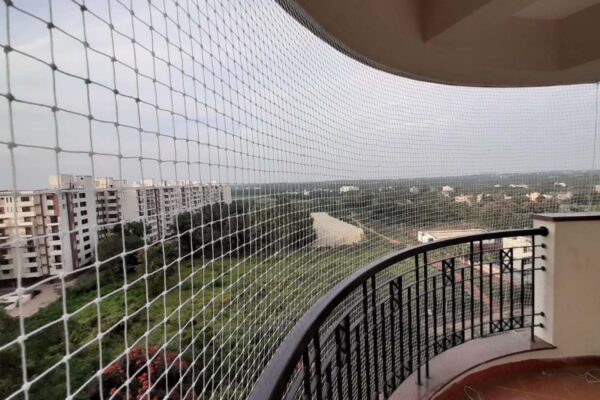High-rise construction sites pose unique challenges in ensuring the safety of workers due to the increased risk of falls and accidents. With workers often working at significant heights, implementing effective safety measures is critical to prevent injuries and fatalities. One of the most effective solutions for enhancing worker safety is the use of vertical safety netting. This safety system provides a reliable barrier to catch falling objects or workers, offering protection from dangerous falls that are common on high-rise projects.
The Importance of Worker Safety in High-Rise Construction
Construction sites, particularly high-rise developments, present significant risks to workers due to the height and nature of the work being performed. According to the Occupational Safety and Health Administration (OSHA), falls are one of the leading causes of injury and death in the construction industry. Ensuring the safety of workers in such environments requires comprehensive measures, including proper fall protection systems. Among these measures, vertical safety netting is one of the most effective tools for preventing accidents.
What is Vertical Safety Netting?
Vertical safety netting is a type of fall protection system that is installed around the perimeter of a construction site or specific elevated work areas. It is designed to catch falling objects or workers, reducing the risk of severe injuries caused by falls. The netting is usually made from durable materials such as nylon or polyester, which are strong enough to withstand impact and effectively absorb the force of a fall. It is commonly used in high-rise construction projects, including skyscrapers, bridges, and other structures where workers perform tasks at significant heights.
How Vertical Safety Netting Works
The primary function of vertical safety netting is to act as a barrier that prevents workers from falling from elevated surfaces or scaffolding. The netting is typically installed vertically, either as a standalone structure or as part of a comprehensive fall protection system. The mesh is designed to catch falling workers and objects, allowing for a safe landing while minimizing the impact force.
In addition to preventing falls, vertical safety netting can also contain debris, preventing objects from falling onto lower levels or pedestrians below. This is particularly crucial in high-rise construction, where materials, tools, and equipment are regularly moved from floor to floor, creating the risk of falling debris. The netting serves as an effective safeguard to protect both workers and the public.

Benefits of Vertical Safety Netting on High-Rise Sites
Enhanced Fall Protection
One of the most significant benefits of vertical safety netting is its ability to provide enhanced fall protection. Whether workers are installing windows, handling materials, or working on scaffolds, the netting ensures they have a safety net in place should an accidental slip occur. It helps to catch workers who may lose their footing and prevents them from falling to lower levels.
Minimized Injury Risk
Vertical safety netting is designed to absorb the impact of a fall, which can reduce the severity of injuries. Unlike traditional fall protection methods such as harnesses or guardrails, which can fail under extreme circumstances, safety nets distribute the force of a fall more evenly, offering greater protection in certain scenarios.
Protection from Falling Objects
High-rise construction sites involve the movement of large, heavy materials. Vertical safety netting not only protects workers from falling but also contains tools, equipment, and construction materials. This ensures that no debris falls onto lower floors or pedestrians in the vicinity, reducing the risk of injury from falling objects.
Compliance with Safety Regulations
Many regions and countries have strict regulations governing safety on construction sites. Vertical safety netting helps construction companies meet these regulations by providing a reliable, effective form of fall protection that aligns with industry standards. This compliance helps avoid costly fines and legal complications that could arise from unsafe work environments.
Cost-Effectiveness
While installing vertical safety netting may require an upfront investment, it can lead to significant cost savings in the long term. By reducing the number of injuries, medical expenses, and legal liabilities, the netting can save construction companies money. Additionally, it helps ensure that projects stay on schedule, as worker downtime due to injuries is minimized.
Conclusion
As high-rise construction projects continue to grow in scale and complexity, ensuring worker safety remains a top priority. Vertical safety netting plays a crucial role in providing fall protection and minimizing the risk of injuries and fatalities on construction sites. With its ability to catch falling workers and debris, vertical safety netting offers comprehensive protection and supports a safer work environment. By implementing this vital safety system, construction companies can not only meet safety regulations but also ensure that workers return home safely at the end of each day.

